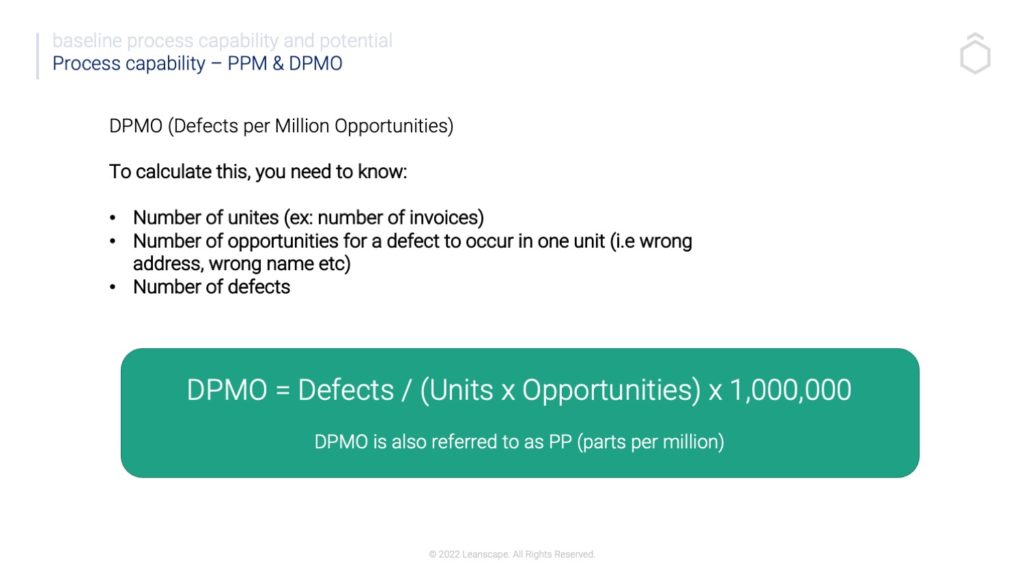What does DPMO Stand For?
DPMO literally means, defects per million opportunities. For example, if I promise to deliver 100 pizzas within 30 mins and and fail to deliver 10, then I have 1 in 10 which failed. Or in DPMO speak, 100,000 DPMO.
When it comes to manufacturing or any process-oriented business, quality is key. In order to ensure that your products or services meet the highest standards, you need to track various metrics related to quality assurance. One of these metrics is DPMO.
The benefits of reducing defects per million opportunities
In process improvement programs like Six Sigma, DPMO (Defects per million opportunities) is a key metric for measuring process performance. In this blog post, we’ll explain what DPMO is and how to calculate it.
DPMO is a measure of defects in a given process. One way to think of it is “defects per unit.” For example, if you’re manufacturing widgets and you have 100 defects per 1,000 widgets, your DPMO would be 10,000.
The main advantage of using DPMO is that it’s easily understandable. It’s a straightforward way to compare the performance of two different processes. Additionally, DPMO can be used to track the performance of a single process over time. By tracking DPMO over time, you can identify trends and improve your process accordingly.
So remember, DPMO meaning is based on on the quality within your processes. With a higher DPMO sigma level, you will experience fewer failures. And why is DPMO important? Because it allows you to understand your sigma level and work towards the high six sigma parts per million score.

To calculate DPMO, you first need to determine the number of defects in your process. Once you have that number, you can calculate the DPMO by dividing it by the number of opportunities for defects. For example, if you have 10 defectives out of 1,000 widgets, your DPMO would be 10,000 (10/1,000 x 1,000).
Interpreting DPMO
DPMO can be interpreted in a few ways. A process with a low DPMO is considered good quality, while a high DPMO indicates poor quality. Generally speaking, a process with a DPMO below 1000 is considered acceptable, while anything above that is cause for concern.
Another way to interpret DPMO is by using sigma levels. This method uses standard deviations to determine the number of defective units in a process. For example, if a process has a DPMO of 7319, that would be equivalent to 2 sigmas. This means there are 2 standard deviations between the mean and the closest specification limit.
A process can also be classified as defect-free or not defect-free based on its DPMO score. A process with a score below +/-3 Sigma is generally considered defect-free.
Conclusion:
While there are other ways to measure process performance, DPMO is a simple and effective metric that can give you valuable insights into your process. By understanding what DPMO is and how to calculate it, you can start tracking this metric in your own process and making improvements accordingly.




















